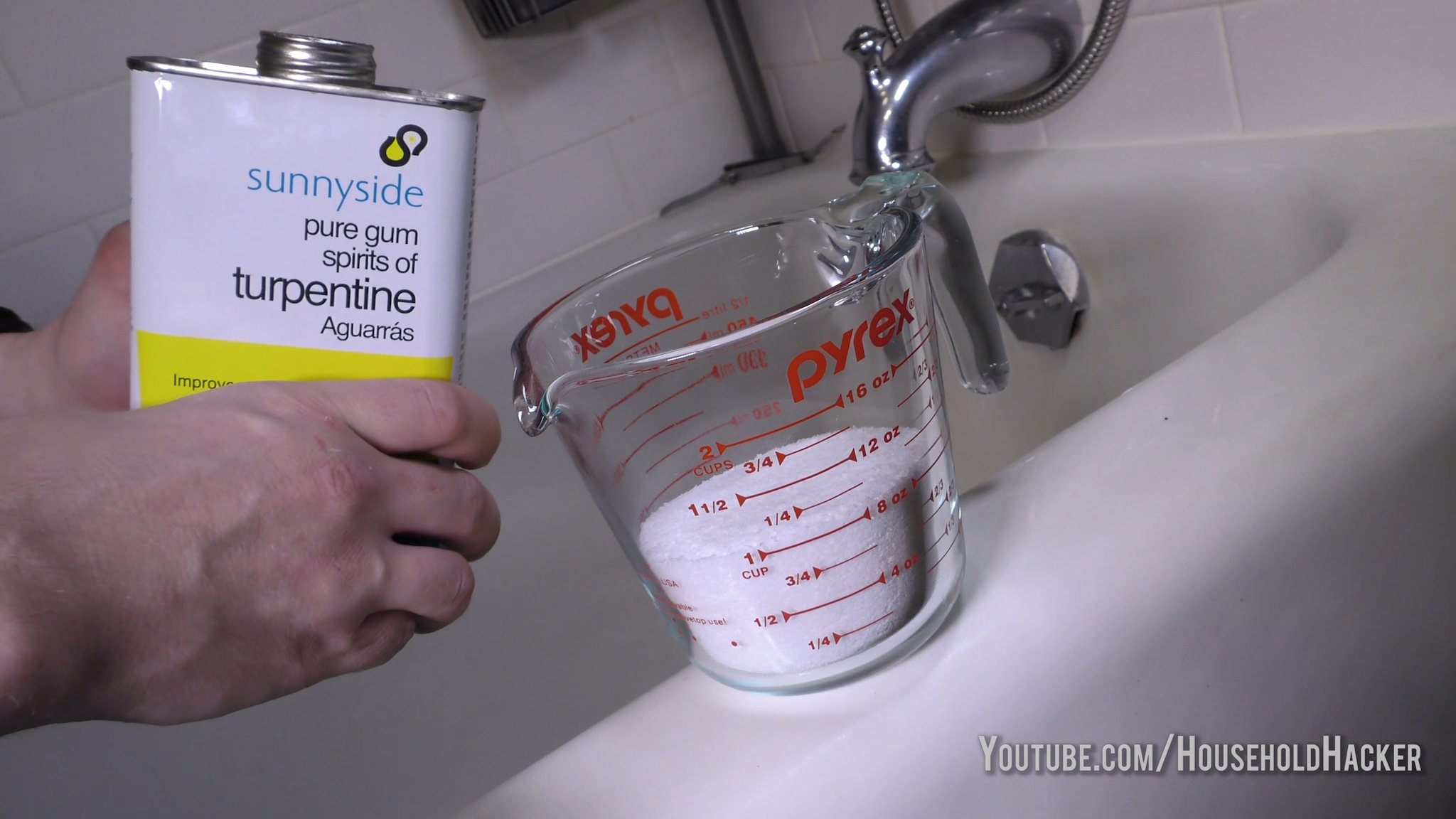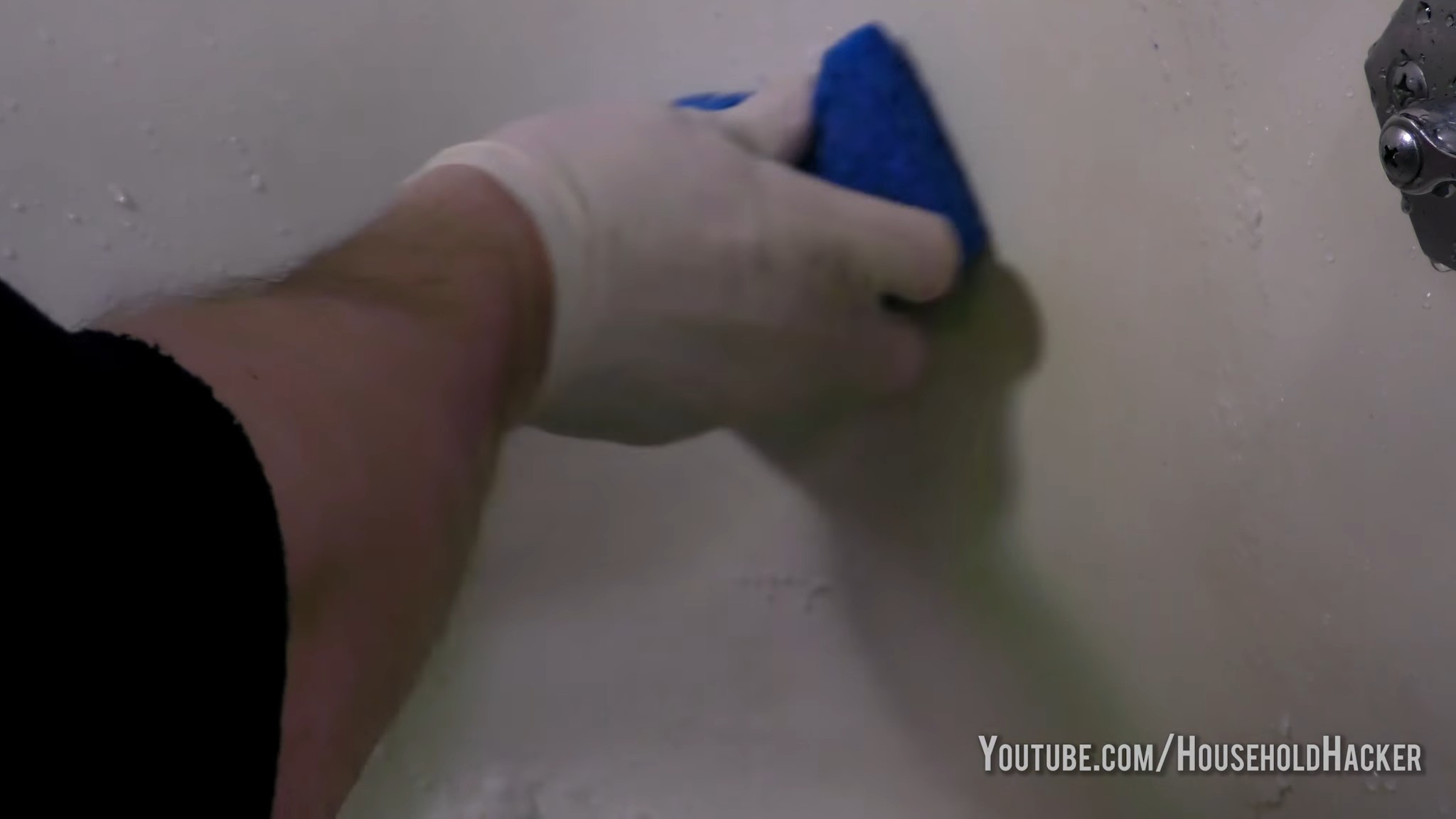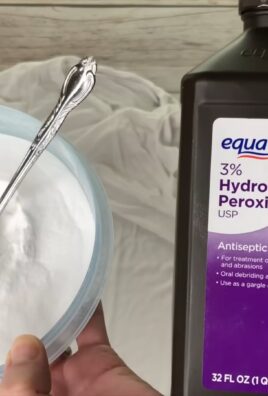Salt Uses You Never Knew: Prepare to be amazed! You probably have a container of salt sitting in your kitchen right now, ready to season your next meal. But what if I told you that humble ingredient holds a treasure trove of secrets beyond the dinner table? This isn’t just about making your food taste better; it’s about unlocking a world of DIY possibilities right in your own home.
For centuries, salt has been more than just a seasoning. From ancient civilizations using it for preserving food and trading, to its symbolic significance in religious ceremonies, salt has played a vital role in human history. Think about the phrase “worth your salt” – it originated from Roman soldiers being paid with salt! Today, we’re not paying soldiers, but we are paying attention to the incredible versatility of this everyday mineral.
In this article, I’m going to share some of the most surprising and practical salt uses you never knew. We’re talking about DIY hacks that can save you money, solve common household problems, and even boost your gardening game. Forget expensive cleaning products and specialized solutions; sometimes, all you need is a little salt to get the job done. Ready to discover the hidden potential of this kitchen staple? Let’s dive in!

Unlocking the Secret Powers of Salt: DIY Hacks You Need to Know!
Okay, so we all know salt. It’s that white, crystalline stuff we sprinkle on our food to make it taste amazing. But did you know that salt is actually a powerhouse of DIY potential? Forget just seasoning your dinner; salt can clean, deodorize, exfoliate, and even help you get rid of pesky weeds! I’m going to share some of my favorite, tried-and-true salt hacks that will seriously change your life (or at least make it a little easier!).
Cleaning and Deodorizing with Salt
Salt’s abrasive texture and natural disinfecting properties make it a fantastic cleaning agent. Plus, it’s way cheaper and often more eco-friendly than those harsh chemical cleaners.
Hack 1: Revive Your Cutting Boards
* The Problem: Cutting boards, especially wooden ones, can absorb odors and stains from food. Yuck!
* The Solution: Salt to the rescue!
1. Sprinkle Generously: Cover your cutting board with a generous layer of coarse salt. I prefer kosher salt for this, but sea salt works too.
2. Lemon Power: Cut a lemon in half and use it to scrub the salt into the cutting board. The lemon juice acts as a natural disinfectant and helps to lift stains.
3. Elbow Grease: Scrub vigorously for a few minutes, paying extra attention to any stained or smelly areas.
4. Rinse and Dry: Rinse the cutting board thoroughly with warm water and let it air dry completely.
Hack 2: Banish Coffee and Tea Stains from Mugs
* The Problem: Those stubborn brown rings in your favorite mugs? Annoying!
* The Solution: Salt and a little scrubbing.
1. Dampen the Mug: Wet the inside of the stained mug with a little water.
2. Salt Scrub: Sprinkle a tablespoon or two of salt into the mug.
3. Scrub-a-dub-dub: Use a damp sponge or cloth to scrub the salt around the inside of the mug, focusing on the stained areas.
4. Rinse and Admire: Rinse the mug thoroughly with warm water. The stains should be gone! If they’re particularly stubborn, repeat the process.
Hack 3: Deodorize Your Sink Drain
* The Problem: A smelly sink drain can stink up your whole kitchen.
* The Solution: A salt and hot water flush.
1. Salt Down the Drain: Pour about half a cup of salt down the drain.
2. Hot Water Chaser: Follow the salt with a pot of boiling water.
3. Let it Sit: Let the mixture sit in the drain for a few hours, or even overnight.
4. Flush Again: Flush the drain with hot water again to clear out any remaining debris. This helps to break down grease and neutralize odors.
Hack 4: Clean a Scorched Pot or Pan
* The Problem: Accidentally burned dinner? Don’t throw that pot away!
* The Solution: Salt can help loosen the burnt-on food.
1. Salt Soak: Cover the bottom of the scorched pot or pan with a thick layer of salt.
2. Add Water: Add enough water to cover the burnt areas.
3. Boil and Simmer: Bring the water to a boil and then simmer for about 10-15 minutes.
4. Cool and Scrub: Let the pot cool slightly, then use a non-abrasive sponge or scraper to remove the loosened food. The salt will help to lift the burnt bits.
Beauty and Wellness with Salt
Believe it or not, salt can also be a fantastic addition to your beauty routine. It’s a natural exfoliant and can help to draw out impurities from the skin.
Hack 5: DIY Salt Scrub for Smooth Skin
* The Problem: Dry, flaky skin?
* The Solution: A simple and effective salt scrub.
1. Choose Your Salt: I like to use fine sea salt for this, as it’s less abrasive than coarser salts.
2. Pick Your Oil: Choose a carrier oil like olive oil, coconut oil, or almond oil. These oils will moisturize your skin while the salt exfoliates.
3. Mix it Up: In a bowl, combine equal parts salt and oil. You can also add a few drops of your favorite essential oil for fragrance (lavender, peppermint, or eucalyptus are great choices).
4. Scrub-a-dub-dub: In the shower or bath, gently massage the salt scrub onto your skin in circular motions. Focus on dry areas like elbows, knees, and feet.
5. Rinse and Moisturize: Rinse thoroughly with warm water and pat your skin dry. Follow with your favorite moisturizer.
Hack 6: Soothe Sore Muscles with a Salt Bath
* The Problem: Aching muscles after a workout or a long day?
* The Solution: A relaxing salt bath.
1. Draw a Warm Bath: Fill your bathtub with warm water.
2. Add the Salt: Add about 1-2 cups of Epsom salt (magnesium sulfate) or sea salt to the bathwater. Epsom salt is particularly good for muscle relaxation.
3. Soak and Relax: Soak in the bath for 20-30 minutes. The salt will help to draw out toxins and soothe your muscles.
4. Hydrate: Drink plenty of water after your bath to rehydrate.
Hack 7: Natural Facial Toner
* The Problem: Want a natural way to tone your skin?
* The Solution: A simple salt water toner.
1. Mix Salt and Water: Dissolve 1/4 teaspoon of sea salt in 1 cup of warm water.
2. Apply to Face: After cleansing, apply the salt water toner to your face using a cotton pad.
3. Let it Dry: Allow the toner to dry naturally on your skin.
4. Moisturize: Follow with your favorite moisturizer. This toner can help to balance your skin’s pH and reduce inflammation.
Gardening and Outdoor Uses for Salt
Salt isn’t just for the kitchen and bathroom; it can also be a handy tool in your garden and around your yard.
Hack 8: Weed Killer
* The Problem: Pesky weeds popping up in your garden or driveway?
* The Solution: Salt can be a natural weed killer.
1. Mix Salt and Water: Dissolve 1 cup of salt in 1 gallon of water.
2. Apply Carefully: Pour the salt water solution directly onto the weeds, being careful not to get it on any plants you want to keep.
3. Repeat as Needed: Repeat the application as needed until the weeds are gone. Be aware that salt can harm the soil, so use it sparingly and only on areas where you don’t plan to grow anything else.
Hack 9: Ant Deterrent
* The Problem: Ants invading your home or garden?
* The Solution: Salt can deter ants.
1. Find the Entry Points: Identify where the ants are entering your home or garden.
2. Create a Barrier: Sprinkle salt along the ant trails and around the entry points.
3. Repeat as Needed: Repeat the application as needed to keep the ants away. Ants don’t like to cross salt, so it can be an effective barrier.
Hack 10: Prevent Ice Buildup
* The Problem: Slippery sidewalks and driveways in the winter?
* The Solution: Salt can help prevent ice buildup.
1. Spread Salt Before a Freeze: Before a freeze, spread salt on your sidewalks and driveway.
2. Use Sparingly: Use salt sparingly, as it can damage concrete and harm plants.
3. Consider Alternatives: Consider using alternatives like sand or gravel if you’re concerned about the environmental impact of salt.
Other Clever Salt Hacks
These are just a few extra tricks I’ve picked up over the years.
Hack 11: Test Egg Freshness
* The Problem: Unsure if your eggs are still good?
* The Solution: The salt water test.
1. Prepare Salt Water: Fill a bowl with water and add 2 tablespoons of salt.
2. Submerge the Egg: Gently place the egg in the salt water.
3. Observe: If the egg sinks and lies flat, it’s fresh. If it sinks but stands on one end, it’s still okay to use but should be used soon.

Conclusion
So, there you have it – a treasure trove of unexpected and incredibly useful salt uses that extend far beyond the kitchen! From revitalizing your cleaning routine to enhancing your beauty regimen and even tackling common household woes, salt proves itself to be a true multi-tasking marvel. We’ve explored how this humble ingredient can banish stains, brighten your complexion, and even act as a natural pest deterrent. It’s time to rethink your relationship with salt and unlock its full potential.
Why is this DIY approach a must-try? Because it’s economical, eco-friendly, and surprisingly effective. Many commercial products are laden with harsh chemicals and come with a hefty price tag. By harnessing the power of salt, you’re opting for a natural alternative that’s gentle on the environment and your wallet. Plus, the satisfaction of creating your own solutions and seeing them work wonders is truly rewarding.
Looking for variations? Absolutely!
* **Scented Cleaning Salt:** Infuse your cleaning salt with essential oils like lemon, lavender, or tea tree for an added boost of freshness and antibacterial properties. Simply add a few drops of your favorite essential oil to the salt and mix well before using.
* **Exfoliating Salt Scrub:** Combine coarse sea salt with a carrier oil like coconut oil or olive oil and a few drops of essential oil for a luxurious and invigorating body scrub. Adjust the ratio of salt to oil to achieve your desired consistency.
* **Colored Bath Salts:** Add natural food coloring to your bath salts for a visually appealing and relaxing soak. Experiment with different colors and essential oil blends to create your own personalized spa experience.
* **Salt Dough Ornaments:** For a fun and creative activity, mix salt, flour, and water to create a simple salt dough. Roll out the dough, cut out shapes, bake until hardened, and decorate to your heart’s content. This is a great project for kids and adults alike.
* **De-Icing Salt Alternative:** While rock salt is commonly used for de-icing, consider using magnesium chloride salt as a more environmentally friendly alternative. It’s less corrosive and less harmful to plants and animals.
We strongly encourage you to experiment with these salt uses and discover the many benefits for yourself. Don’t be afraid to get creative and adapt the techniques to suit your specific needs and preferences. The possibilities are truly endless!
Now, we want to hear from you! Have you tried any of these salt uses before? What were your results? Do you have any other creative ways to use salt that we haven’t mentioned? Share your experiences, tips, and tricks in the comments below. Let’s build a community of salt enthusiasts and unlock even more of its hidden potential together. Your insights could inspire others to embrace the power of this amazing natural resource. So, go ahead, give these DIY tricks a try and let us know what you think! We’re eager to hear your salt stories!
Frequently Asked Questions (FAQs)
Is all salt the same for these DIY uses?
No, not all salt is created equal. While table salt can be used for some purposes, other types of salt are often more effective for specific applications. For example, coarse sea salt is ideal for exfoliating scrubs, while Epsom salt is best for soothing sore muscles. Rock salt is commonly used for de-icing, but magnesium chloride salt is a more environmentally friendly alternative. Kosher salt is a good all-purpose option for cooking and cleaning. Consider the specific application when choosing the type of salt to use.
Can I use iodized salt for cleaning?
While iodized salt can be used for cleaning, it’s generally not recommended. The iodine in iodized salt can potentially stain some surfaces, especially light-colored ones. Non-iodized salt is a safer option for cleaning purposes. If you only have iodized salt on hand, test it on an inconspicuous area first to ensure it doesn’t cause any discoloration.
How do I store salt after mixing it with other ingredients?
The best way to store salt mixtures depends on the ingredients you’ve added. For dry mixtures like cleaning salt or bath salts, store them in an airtight container in a cool, dry place. This will prevent the salt from clumping or absorbing moisture. For wet mixtures like salt scrubs, store them in a sealed container in the refrigerator to prevent spoilage. Be sure to label the container with the contents and the date it was made.
Is salt safe to use on all surfaces?
While salt is generally safe to use on most surfaces, it’s always a good idea to test it on an inconspicuous area first, especially on delicate or sensitive materials. Avoid using salt on surfaces that are easily scratched, such as polished wood or certain types of plastic. Also, be cautious when using salt on metal surfaces, as it can potentially cause corrosion over time. Always rinse the surface thoroughly with water after using salt to remove any residue.
Can salt really help with pest control?
Yes, salt can be an effective natural pest deterrent. Salt absorbs moisture, which can create an inhospitable environment for certain pests like ants, fleas, and slugs. Sprinkling salt around entry points or directly on ant trails can help to discourage them from entering your home. However, it’s important to use salt sparingly and avoid applying it directly to plants, as it can harm them.
How often should I use a salt scrub?
The frequency of using a salt scrub depends on your skin type and sensitivity. Generally, it’s recommended to use a salt scrub no more than once or twice a week. Over-exfoliating can strip your skin of its natural oils and cause irritation. If you have sensitive skin, start with once a week and gradually increase the frequency as tolerated. Always moisturize your skin after using a salt scrub to keep it hydrated and healthy.
Can I use salt to remove stains from clothing?
Yes, salt can be an effective stain remover for certain types of stains. For fresh stains, immediately cover the stain with salt to absorb the liquid and prevent it from setting. For tougher stains, create a paste of salt and water and apply it to the stain. Let it sit for a few minutes, then gently rub the area and rinse with cold water. Salt is particularly effective for removing stains from red wine, blood, and grease. However, always test the salt solution on an inconspicuous area of the fabric first to ensure it doesn’t cause any discoloration.
Is there any risk of using too much salt in my diet?
Yes, consuming too much salt can have negative health consequences. Excessive salt intake can lead to high blood pressure, which increases the risk of heart disease and stroke. It’s important to be mindful of your salt intake and aim for a balanced diet. The Dietary Guidelines for Americans recommend limiting sodium intake to less than 2,300 milligrams per day. Be aware of hidden sources of salt in processed foods, fast food, and restaurant meals.
Can I use salt to preserve food?
Yes, salt has been used for centuries as a natural food preservative. Salt draws moisture out of food, which inhibits the growth of bacteria and other microorganisms that cause spoilage. Salt can be used to preserve a variety of foods, including meat, fish, vegetables, and fruits. Common methods of salt preservation include salting, brining, and pickling.
What are the environmental impacts of using salt?
While salt is a natural substance, its overuse can have negative environmental impacts. Excessive salt runoff from roads and agricultural fields can contaminate waterways and harm aquatic life. Salt can also damage soil structure and inhibit plant growth. To minimize the environmental impacts of salt use, use it sparingly and consider using alternative de-icing methods like magnesium chloride salt or sand.





Leave a Comment